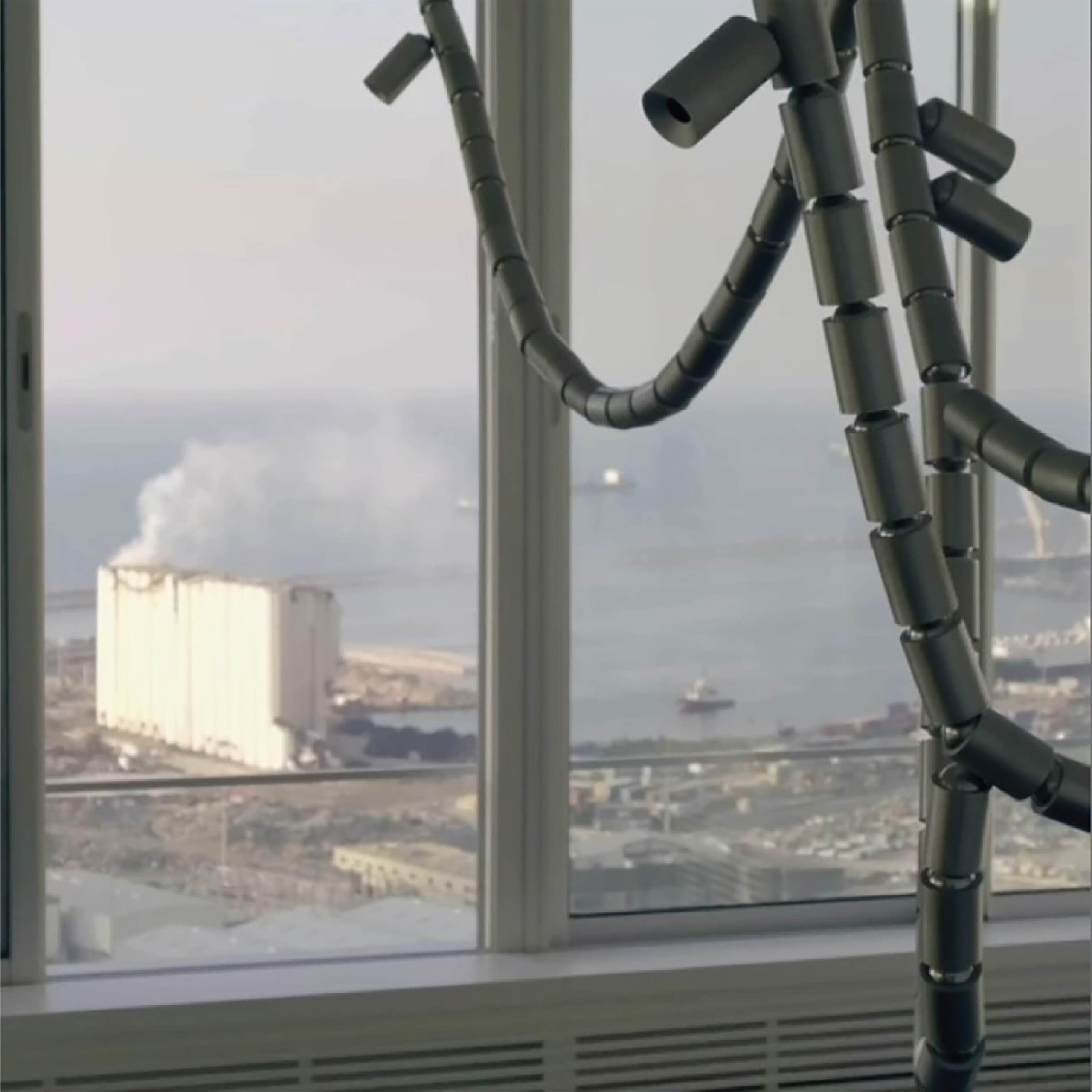Light Impact
How do you design in a city that is never on solid ground?
Almost two years after the blast that destroyed half of Beirut, we got commissioned by Karim Bekdache Studio to design and execute a new custom lighting fixture that
is meant to replace a Lindsay Adelman mouth blown glass collectible chandelier that had shattered during the August 4th port explosion.
Perched with a direct view of the blast site, under the guiding principle of “what bends does not break,” our vision was to engineer a lighting fixture that would embody a design sturdy enough to survive another blast. We wanted to create a lighting fixture that looks as if it was a masculine apparatus of war while sustaining a feminine essence of a chandelier and the elegance that is associated with it.
Our intention was to achieve this elegance with something as strong and robust as aluminum. This birthed a product composed of over a hundred modular aluminum cylinders interconnected by spherical joints, thus creating a rope-like effect. If another blast were to happen, the piece would withstand the shock because of its malleability.
Several months of rigorous prototyping culminated in a robust system of modules meticulously carved from solid aluminum. The modules were built around a ball-and-socket mechanism, lending the solid object a flexible characteristic. The resultant design unlocked limitless possibilities in terms of scale and form. Further innovation was incorporated in the form of directional aluminum lighting projectors,
designed to precisely channel its light. This introduced an element of modularity, enabling the fixture to constantly evolve while maintaining its fluid-like attributes.
It is meant to symbolize the city’s unwavering spirit, its constant evolution, and resilience in the face of adversity.




